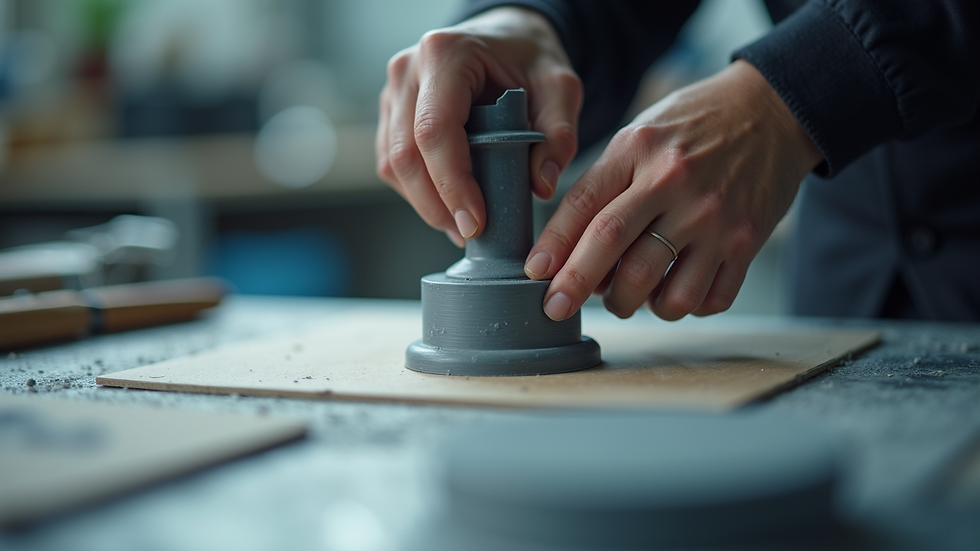How to Perfectly Print STL Files for 3D Projects
- eastcoast3dz
- Oct 13
- 3 min read
3D printing has revolutionized the way we create prototypes, models, and even functional parts. At the heart of this process lies the STL file - a digital blueprint that guides your 3D printer to bring your ideas to life. However, printing 3D STL files perfectly requires more than just loading the file and hitting print. This guide will walk you through the essential steps and tips to ensure your 3D projects come out flawless every time.
Understanding the Basics of Printing 3D STL Files
Before diving into the printing process, it’s crucial to understand what an STL file is and how it works. STL stands for Stereolithography, a file format that describes the surface geometry of a 3D object without any color or texture information. It represents the object as a mesh of triangles, which your 3D printer interprets to build the physical model layer by layer.
Preparing Your STL File
Check for Errors: Use software like Meshmixer or Netfabb to inspect your STL file for holes, non-manifold edges, or flipped normals. These errors can cause printing failures or defects.
Scale Appropriately: Ensure your model is scaled to the desired size. Some STL files may be too large or too small for your printer’s build volume.
Orient the Model: Position your model to minimize the need for supports and to optimize surface quality. For example, flat surfaces should ideally be parallel to the build plate.
Choosing the Right Slicer Settings
A slicer converts your STL file into G-code, the language your printer understands. Key settings include:
Layer Height: Smaller layers produce finer details but increase print time.
Infill Density: Determines the internal structure strength. Higher infill means stronger but uses more material.
Print Speed: Slower speeds improve quality but take longer.
Supports: Enable supports for overhangs exceeding 45 degrees to prevent sagging.

Tips for Successful Printing 3D STL Files
Achieving a perfect print involves more than just software settings. Here are practical tips to enhance your results:
Use Quality Filament
The filament quality directly affects print strength and finish. Choose reputable brands and store filament in a dry environment to avoid moisture absorption, which can cause bubbles and weak prints.
Calibrate Your Printer Regularly
Bed Leveling: A level bed ensures the first layer adheres well, preventing warping or detachment.
Nozzle Temperature: Adjust according to filament type; too hot or too cold can cause stringing or poor layer adhesion.
Extruder Calibration: Ensure the extruder feeds the correct amount of filament.
Optimize Support Structures
Supports are necessary for complex geometries but can leave marks when removed. Use slicer options to:
Minimize support contact points.
Use tree supports for easier removal.
Adjust support density and pattern.
Post-Processing Techniques
After printing, post-processing can enhance the appearance and functionality of your model:
Sanding: Smooth rough surfaces.
Priming and Painting: Add color and protect the print.
Acetone Vapor Smoothing: For ABS prints, this technique creates a glossy finish.

Can I Get Something 3D Printed at Staples?
Staples has expanded its services to include 3D printing, making it accessible for those without personal printers. Here’s what you need to know:
File Submission: You can upload your STL file online or bring it to a local Staples store.
Material Options: Staples typically offers PLA and ABS filaments, suitable for most standard projects.
Turnaround Time: Depending on the complexity, prints can take from a few hours to a couple of days.
Cost: Pricing depends on material volume, print time, and finishing options.
Using Staples for your 3D printing needs is a convenient option if you want professional quality without investing in a printer. However, for intricate or highly customized projects, personal control over settings might be preferable.

Troubleshooting Common 3D Printing Issues
Even with careful preparation, problems can arise. Here are solutions to frequent issues:
Warping: Caused by uneven cooling. Use a heated bed and enclosure to maintain temperature.
Stringing: Fine threads between parts. Lower nozzle temperature and increase retraction settings.
Layer Shifting: Misaligned layers due to loose belts or stepper motor issues. Tighten belts and check motor drivers.
Under-Extrusion: Gaps in layers caused by clogged nozzles or incorrect extrusion multiplier. Clean the nozzle and calibrate extrusion.
Enhancing Your STL File Printing Experience
For those looking to dive deeper into the world of 3D printing, exploring resources and communities can be invaluable. Websites like East Coast 3D offer tutorials, tips, and services related to stl file printing that can help you refine your skills and troubleshoot complex issues.
Experiment with different slicers such as Cura, PrusaSlicer, or Simplify3D to find the one that best suits your workflow. Additionally, joining forums and social media groups can provide real-time advice and inspiration.
Mastering the art of printing 3D STL files opens up endless possibilities for creativity and innovation. With the right preparation, settings, and post-processing, your 3D projects will not only look professional but also perform reliably. Keep experimenting, learning, and pushing the boundaries of what you can create with 3D printing.




Comments